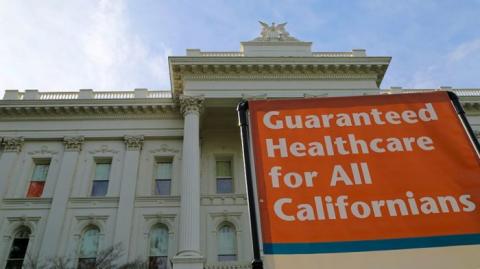The California Senate passed legislation earlier this month to implement a single-payer health care system. The bill's passage was warmly received by progressives, but others have raised concerns about funding.
Assembly Speaker Anthony Rendon last week issued a statement saying he would not advance the bill and that it would remain in committee "until further notice." Rendon cited "financing" as a reason he would not pursue the bill.
Despite wide support among Californians, the bill has been heavily criticized as many say it cannot be financed. State Senator Tom Berryhill recently said, "If we cut every single program and expense from the state budget and redirected it to this bill, we wouldn’t even cover half of the price tag."
A recent analysis of the bill gave it an estimated cost of $400 billion, which includes an additional $200 billion on top of current spending levels. However, a more recent study conducted by the University of Massachusetts–Amherst shows that a single-payer system in California is actually quite affordable.
One of the researchers behind the study, Tom Pollin, recently wrote in the LA Times:
"Enacting a single-payer system would yield considerable savings overall by lowering administrative costs, controlling the prices of pharmaceuticals and fees for physicians and hospitals, reducing unnecessary treatments and expanding preventive care." - Tom Pollin
The study concludes that the Healthy California Act would actually produce savings of 18% which when factored into the total cost, brings the price of the bill down to $331 billion.
Pollin notes that currently about 70% of California's health care spending is paid through public programs, totaling $225 billion. That leaves about $10 billion in additional funds the state would need to come up with to replace private insurance.
According to the study, these funds can easily be achieved by the combination of two new taxes.
The first is a 2.3% gross receipts tax. The tax would kick in after the first $2 million in revenue and would not apply to small businesses.
The second is a 2.3% increase of the state sales tax, with exemptions on housing, utilities, and food. This would be paired with a 2% income tax credit for low income families currently insured through MediCal to offset the sales tax increase.
Overall the study finds that under a single-payer system, most Californians and businesses would save money. Middle income families would see a decrease in health care spending from between 3.4% and 9.9% of their income to just 0.8%.
Businesses as well would see a drop in costs under a single-payer system. Small firms, middle-sized firms, and large firms would see costs fall by 22%, 6.8%, and 0.5% as a share of payroll, respectively.
The study concludes:
"In sum, the establishment of the Healthy California single-payer system will generate financial benefits for both families and businesses at all levels of the California economy."
Despite the recent concerns by members of both parties that the HCA would be unaffordable, this recent study from UMass provides a clear and affordable path for California to implement single-payer health care for its residents.
